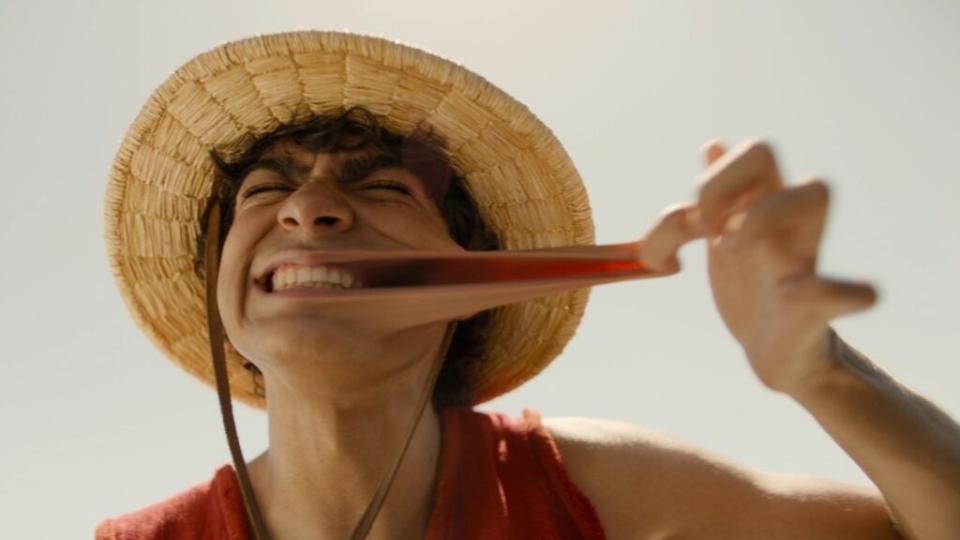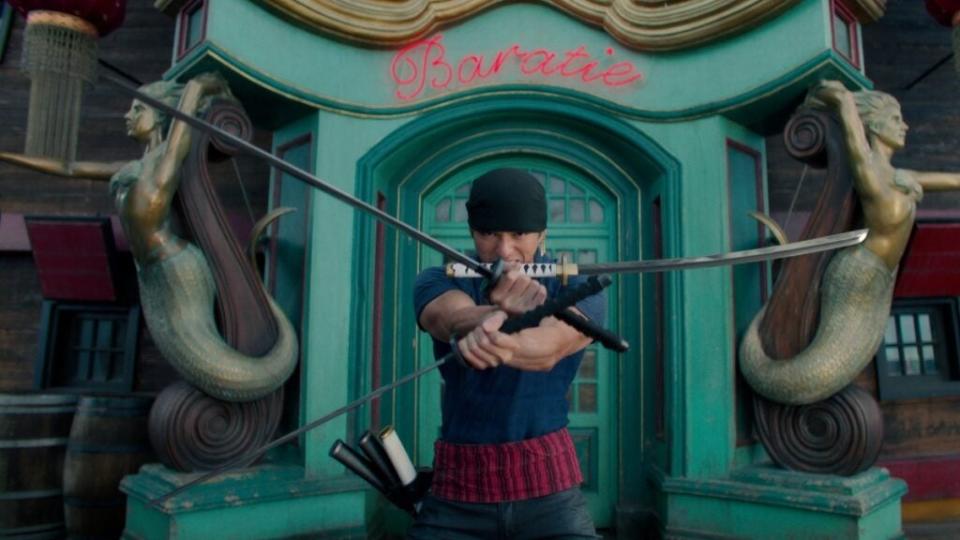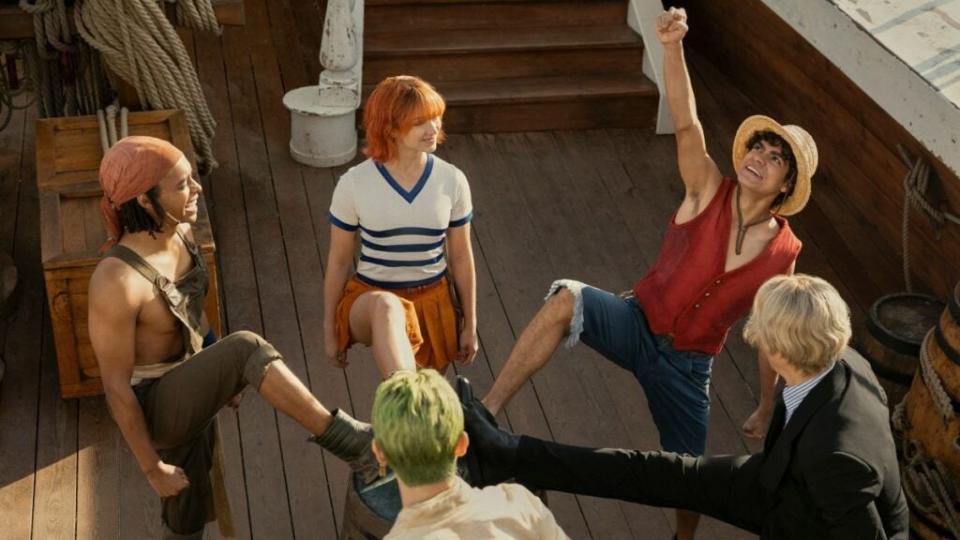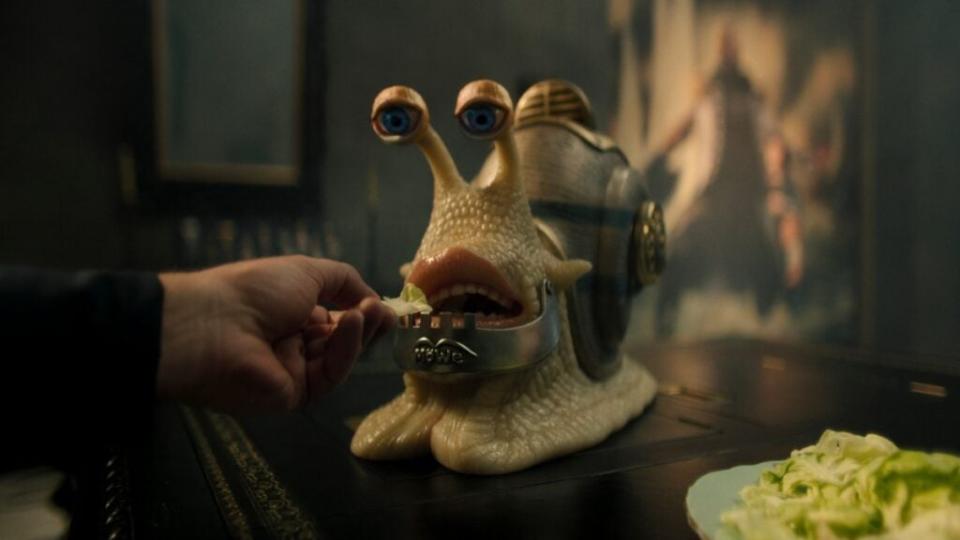‘One Piece’ Creator Eiichiro Oda Was Brought to Tears by Netflix’s Live-Action Adaptation
- Oops!Something went wrong.Please try again later.
- Oops!Something went wrong.Please try again later.
- Oops!Something went wrong.Please try again later.
On paper, adapting “One Piece” — a manga filled with rubbery protagonists, giant swords, fish people and flamboyant costumes — for live-action seems like a task as foolish as trying to become King of the Pirates. But for Tomorrow Studios CEO Marty Adelstein and partner/president Becky Clements, it was a challenge they couldn’t resist.
“Because it was such a big piece of IP, beloved all over the world, we’re basically masochists,” Adelstein joked to TheWrap. “We just felt that there was a way forward to do it. And if it could be done, it would resonate with all the fans around the world. It was a challenge we couldn’t not pursue.”
It’s also a challenge that’s already paid off, at least on some level. In early January, the teams at Tomorrow Studios and ITV Studios hosted a screening attended by “One Piece’s” creator, artist Eiichiro Oda.
“He literally had tears in his eyes,” Adelstein said. “It was a big buy-in for him to let us go do this.”
So how did we get here? How did the studio behind Netflix’s version of “Cowboy Bebop,” the John Cho-led live-action adaptation that was “killed” by social media and quickly canceled, turn around and create an adaptation so true to the source material that it received a letter of support from “One Piece’s” creator? It’s a journey that’s been literally years in the making.
In fact, it took two years and three trips to Tokyo for Tomorrow Studios to gain Oda and “One Piece” manga publishing company Shueisha’s trust. Those first introductions were made by Tetsu Fujimura, who has served as the producer on other anime live-action adaptations such as “Ghost in the Shell” and “Cowboy Bebop.”
Both Adelstein and Clements were already big fans of “One Piece,” which helped them convince Oda and Shueisha that their version would stay true to the original story. When the Tomorrow Studios leaders felt they were in over their heads, they leaned on their senior vice president and resident “One Piece” expert Nic Louie to help them “speak Oda’s language.”
“The first buy-in was, ‘Hey, instead of making a movie and waiting 10 years, we can get this made in two or three years and on the air,'” Adelstein said.

Due to the scale of the series, that timeline was… a bit ambitious. But in the end, the studio got the ‘yes’ they were hoping for.
Unlike with Tomorrow Studios’ previous big anime adaptation for Netflix, “One Piece’s” creator remained heavily engaged throughout the entire development and production process. Oda would often focus on ensuring the adaptation represented his “characters’ truths” accurately.
According to Clements, he was “dazzled” by the production design and “really supportive” of casting decisions. Any time series developers Matt Owens and Steven Maeda would stray from the source material to make a moment more resonant for live-action, Oda would “embrace it.”
That conversation was essential to the adaptation’s development. “One Piece” follows the adventures of Monkey D. Luffy, an optimistic young man who dreams of being a pirate king. Filled with animal-hybrid people and characters with borderline superpowers, the manga is as whimsical and cartoonish as it can be somber at times. That’s a difficult line for any medium to walk, especially live-action.
“I think for [Oda], because he hasn’t done live-action, it took a little time to understand how are they going to do this,” Clements said. Throughout the process, the creator was assured that certain emotional moments he was nervous about would come through in the hands of the series’ actors and directors. “When he started seeing it, he said, ‘You were right.'”
Clements noted that sometimes when her team is working with authors and creators, they have different views than the studios, which can lead to a “hard relationship.” “With Oda, it was nothing but additive,” she said. “He only elevated what we were able to do.”
This collaboration was far different than what the team experienced when it came to “Cowboy Bebop.” What was originally poised to be a major genre tentpole for Netflix was cancelled after one season following scathing reviews and poor reactions from fans.
With that series, director Shinichirō Watanabe gave his approval for the studios to do a live-action series but wasn’t involved. Watanabe later said he could not make it past an opening scene of the adaptation.

“I loved ‘Cowboy Bebop.’ I was shocked by what happened with it. We all still love it, and so we don’t look at it as a failure,” Adelstein said. “But it definitely informed a lot of choices we made on ‘One Piece.'”
One of those choices was recognizing that anime and manga fans want a direct adaptation of the stories they love rather than a more interpretive adaptation.
“We chose ‘Bebop’ to have that tone and to have a little more character creation because not a lot of it existed [in the original]. Not a lot of the backstories existed in that property, whereas ‘One Piece,’ everything is there,” Clements said.
But just because Oda was involved, that didn’t make the live-action adaptation easy. Because “One Piece” exists in such a fantastical world, it was a constant challenge to balance the more bizarre elements of the story without being too silly, while also keeping the emotions and characters grounded.
Edgar Wright’s “Scott Pilgrim vs. the World” was used as a “tonal touchstone,” Clements revealed, as was Victor Fleming’s 1939 classic “The Wizard of Oz.”
And then there was the headache of casting.
Tomorrow Studios launched a global search to find its stars. The team continuously referred back to the manga to determine the “guardrails” for these characters.
“What is their ethnicity? What is their cultural origin?” Clements said. “We were very cognizant of supporting what the backstory from the manga was.”
Casting the series’ lead, Monkey D. Luffy, was especially challenging. Apart from this wild world, “One Piece’s” draw rests in its fearless protagonist: the upbeat young man who’s confident he’ll one day become King of the Pirates, despite not having any leadership experience, a ship, a crew or really any reason for people to believe he’s a good captain.
“He has to be uplifting, but he can’t be naive, but he has to be likable. He has to be everything: Strong, complicated, but earnest,” Clements said. “When we saw [Iñaki Godoy], we all felt it.”

Clements described Godoy as “the brightest, kindest, most hardworking, gracious young man with a ton of talent.” But one of her favorite stories about him has to do with his family.
Because the Capetown-based series required a great deal of travel and Godoy was a minor at the time, the team was nervous to hire him. When they asked him what his family thought about this role, Godoy literally pulled his mom onto the Zoom.
“He’s like, ‘This is my mom, Pam. She’s so excited,'” Clements said. “So he just traveled with his family because they’re all so close anyway.”
As for the rest of the Straw Hat Pirate crew, series developer Matt Owens knew early on he wanted Emily Rudd to play the thief Nami. Mackenyu, who plays the swordsman Roronoa Zoro, was already a “massive star” in Japan. Jacob Romero Gibson was also seen as a great addition, playing the cowardly sharpshooter Usopp.
Though all members of the cast worked hard to embody their characters, Taz Skylar — who plays the womanizing master chef Sanji — went above and beyond, according to the studio’s leaders. Clements revealed that Skylar “never” stops working out and that he “worked on his fight sequences more than anyone.”
“He’d take cooking lessons and would come in and make plates of food and deliver them to the crew to say, ‘How did I do?'” Clements said. “They were very committed to working hard for the live-action, because they understand the weight on their shoulders to make the fans excited.”
“Having been doing this, both of us, a long time, sometimes kismet happens. Like when I was doing ‘Prison Break,’ we were offered every star in the world. Then Wentworth Miller walked in the room, and we all looked at each other and said, ‘He’s Michael Scofield,'” Adelstein said. “Well, we happened to get lucky four or five times on this one.”

Even with the talented cast, it’s hard to overstate the amount of work this adaptation required. Filled with elaborate custom sets that change from episode to episode, nearly every scene in the series required multiple departments, ranging from visual effects to stunts and blue screens.
Clements estimated that 85% of what appears on-screen was in-camera. That includes “One Piece’s” iconic snail phones, which were created by the props department and operated by mechanics.
It’s a big investment, which Tomorrow Studios is hoping will pay off. Looking at the industry at large, Clements sees potential in live-action manga and anime adaptations.
“It’s almost like they’ve done your research and development for you already. They’ve tested the characters, they’ve tested the backstories, they have a fan base,” Clements said. “In our extremely full viewership queues, anytime you can have something that has a bit of a built-in audience… it makes it easier from a sales perspective, because they’re all searching for the next big hit.
“There will always be buyers,” Clements continued, noting that with projects like “One Piece,” cost will always be a major conversation. “But I think there will always be a marketplace for it, particularly because it often draws young male viewers, and that seems to be an elusive target these days.”
The live-action “One Piece” is now available to watch on Netflix.
The post ‘One Piece’ Creator Eiichiro Oda Was Brought to Tears by Netflix’s Live-Action Adaptation appeared first on TheWrap.

